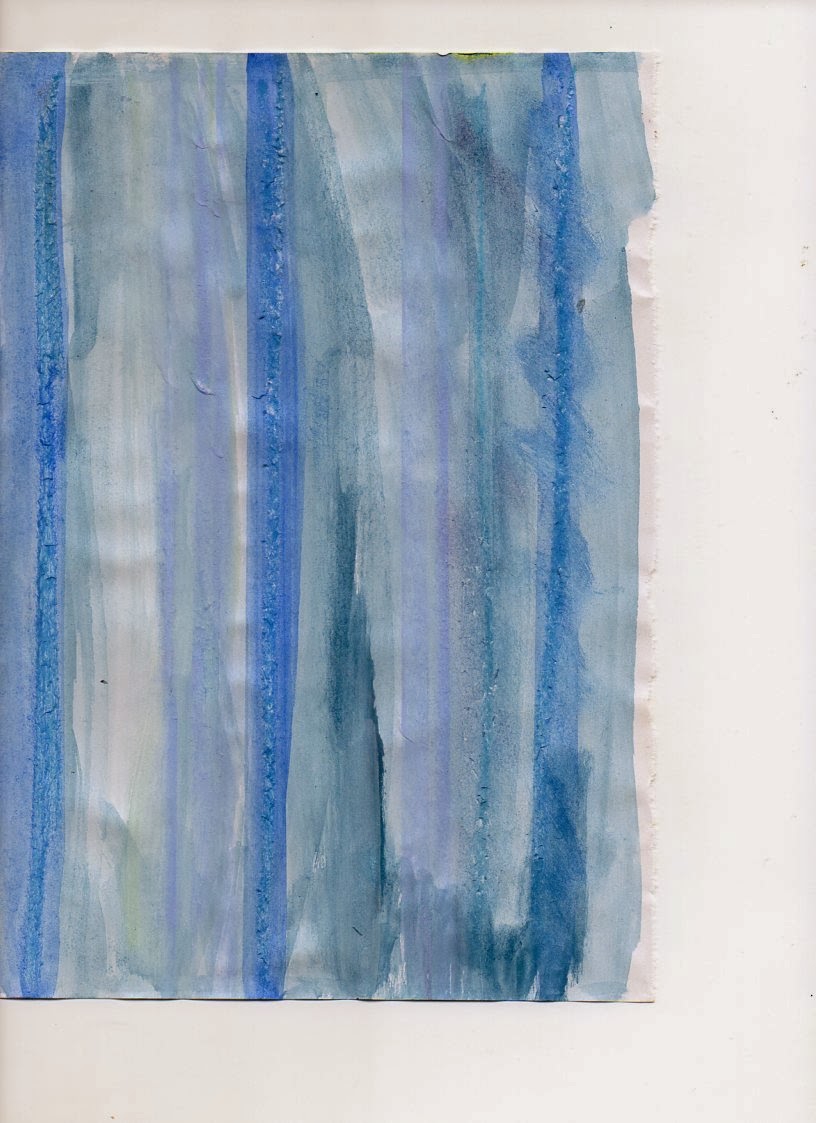I set up the spare machine but encountered difficulties when I tried to cast on. I swapped the bar but this didn't help the problem of the cast on not working as it should - the carriage was jamming. I tried various solutions with Lydia's help but to no avail. I suggested to Lydia that I use my machine as a base one and any parts from the other one. So I set about using my machine to cast on but had difficulties. Exasperated, I spoke to Lydia again and she advised she would be selling some of her machines from another class she runs that is closing so I decided I would have one of those. My existing machine and the spare will though go to a good home. Someone recycles them, does them up and they get passed on to a charity.
Lydia subsequently allowed me to use two different machines - one the same make as my current one and the other a Brother to see which one I preferred. I had no preference really as they both worked as they should which to me was exciting after 3 weeks of trying to get samples from one machine!
I have settled on a Brother machine which Lydia will bring in for me next week. I do not know yet how much this will cost. All I know is that when I went onto her machines today to use them, it was so much easier because it was a machine in good condition.
What have I learnt today? Sometimes you have to know when to stop trying to make things work and accept the solution that is being offered even if it means spending a little more money.
I don't feel any of my time spent so far has been wasted as I have been finding out how the machines can be taken apart, cleaned, put back together and how to get started. I have also made a very useful contact in Lydia, who is very passionate about knitting to help me.
Today I did produce the sample below which is created using the fairisle setting on the machine. Fairisle is I believe the only setting which enables you to use two or more colours together. I also used a punch card and it is the punch card that creates the vertical pattern shown below.
By setting hte machine to Tuck stitch, I have created the diamond pattern below. The actual pattern is clearer using two colours.
I have learnt that when using a punch card, I need to clip the card together otherwise when it comes to the end, it will stop, however if I clip it together it goes round continuously.
 |
| This is a piece produced using two colours and a punch card which has the pattern on it |
| This is an example of a punch card. I do have blank ones where I can create my own pattern (http://media-cache-ec0.pinimg.com/236x/c3/75/ac/c375acf6ce0966321441a076fb49fc20.jpg) |
 |
| as above but this has the addition of the tuck stitch |
http://www.theknittingcloset.com/prod_images_blowup/Machine_Parts_-_Punch_Card_Clips_004.jpg
I have now spoken to Lydia as I couldn't go to class yesterday due a gas emergency. I have however arranged to visit her on 7th April as there are no classes now until end of April due to half term and other plans for the group so Lydia is giving me her time to go and get started on my work and then I will be able to have a working machine at home. She is charging me £25 which is affordable.
From typing up this reflection, I have realised that i'm not sure whether I have used two different punch cards to get two different patterns. I thought I had changed the setting to Tuck stitch to get the diamond two colour pattern, however now I'm not sure. I therefore need to ensure I write down at the time what setting I am using. Partly this is due to excitement at actually producing something as it's quite an achievement but also it's me thinking i'm listening to Lydia, which I am, but then i'm not really taking in what she is telling me. Therefore, writing it down is essential if I want to produce the same pattern again without having to ask for help each time.




















































